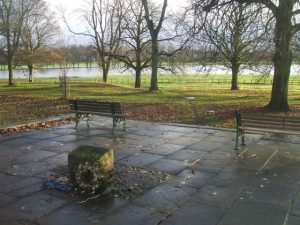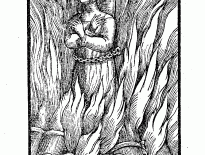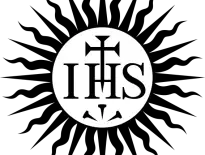On this day in history, 4th July 1597, in the reign of Queen Elizabeth I, three men were martyred at Knavesmire, York. They were William Anlaby (or Andleby), Catholic priest; layman Thomas Warcop, who had been charged with harbouring Anlaby, and layman Edward Fulthrop.
William Anlaby was born c.1552 in Etton, Yorkshire, and was the second son of John Anlaby of Etton and his wife, Dorothy. Anlaby graduated BA from St John's College, Cambridge, in 1571. He converted from Protestantism to Catholicism in 1577 after meeting Cardinal William Allen at Douai while travelling. Anlaby joined Allen's college, or seminary, there and was ordained as a Catholic priest at Cateau-Cambrésis. In 1578, Anlaby was sent as a missionary to England, where he worked in Lincolnshire, Huntingdonshire, Durham and Yorkshire, including ministering to Catholic prisoners at Hull gaol. In 1597, after twenty years of missionary work, Anlaby was arrested for being a Catholic priest and taken to York with Thomas Warcop of of Winston, co. Durham, who was accused of harbouring him. They were tried with Edward Fulthrop, found guilty and executed at York. on the gallows site known as the "York Tyburn" overlooking Knavesmire, on 4th July 1597.
In 1929, William Anlaby was beatified in by Pope Pius XI.
In his book, Memoirs of missionary priests, and other Catholics of both sexes, that have suffered death in England on religious accounts from the year 1577 to 1684, Bishop Richard Challoner (1691-1781), has a chapter on Anlaby and he writes:
"Wonderful was the austerity of his life in frequent watchings, fastings, and continual prayer. He never spoke but where the honour of God, and his neighbour's good, required it. His recollection was so great, that, even upon his journies, he was always in prayer, mental or vocal, with his soul so absorpt in God, that he often took no notice of those he met; by which means he sometimes was exposed to suspicions and dangers from the adversaries of his faith, into whose hands he fell, at length, after twenty years' labours in the vineyard of his Lord; and was condemned, barely on account of his character and functions, and hanged, drawn and quartered at York, on the 4th of
July, 1597."
You can read more about Anlaby in Challoner's book online at Archive.org - see click here.
Further reading:
- "Post Reformation Catholicism in east Yorkshire, 1558–1790" by Dom Hugh Aveling, Ampleforth Abbey - read online at http://www.eylhs.org.uk/dl/123/post-reformation-catholicism-in-east-yorkshire
- Anstruther, Godfrey (1969) The Seminary Priests: Elizabethan 1558-1603.
- ed. Butler, Alban (2000) Butler's Lives of the Saints: July, Continuum.
Also on this day in history, 4th July 1623, Wiliam Byrd, the famous Elizabethan English composer, died at Stondon Massey in Essex. Click here to read more about Byrd.
4 July is also the anniversary of the death of Gregory Cromwell, 1st Baron Cromwell and son of the late Thomas Cromwell, Earl of Essex, in 1551 at Launde Abbey from sweating sickness. Tudor Society member Teri Fitzgerald wrote a fascinating article with Diarmaid MacCulloch on two Holbein miniatures which she believes to be of Gregory - see Gregory Cromwell: Two Portrait Miniatures by Hans Holbein the Younger.
Notes and Sources
Picture: Photo of the site of "York Tyburn", the site of the gallows overlooking Knavesmire, © Copyright John M and licensed for reuse under this Creative Commons Licence, geograph.org.uk.
- Thompson Cooper, ‘Anlaby, William (c.1552–1597)’, rev. G. Bradley, Oxford Dictionary of National Biography, Oxford University Press, 2004.
- Challoner, Richard (1803) Memoirs of missionary priests, and other Catholics of both sexes, that have suffered death in England on religious accounts from the year 1577 to 1684, Volume I, Printed for T. Haydock, p. 192-194.
- W. P. Jeffc*ck and L. E. Whatmore, "Families of the English Martyrs – Some Further Notes", British Catholic History, https://www.cambridge.org/core/journals/british-catholic-history/article/families-of-the-english-martyrs-some-further-notes/4F42DEBDD719B059D3FDB85B6781FE43




Leave a Reply